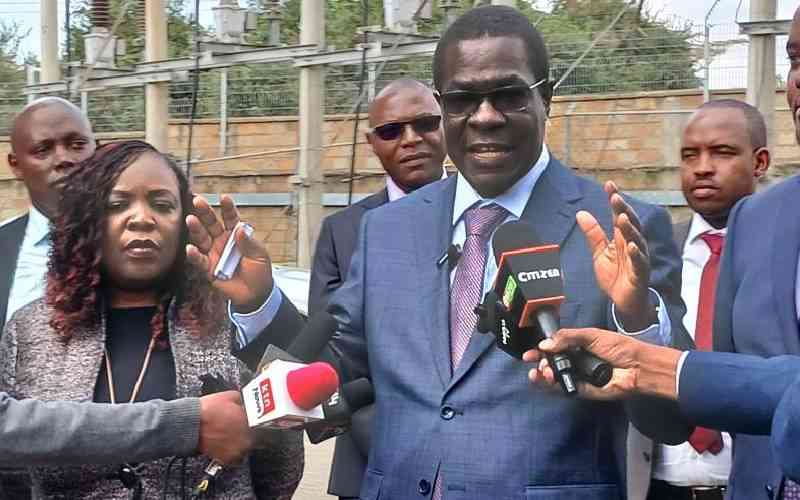Energy and Petroleum CS Opiyo Wandayi and Kenya Power Chairperson Joy Brenda Masinde at the National Control Centre during induction tour and update on the status of electricity supply in the country, on September 5, 2024. [File, Standard]
The country’s daily electricity demand has been on a sharp rise, with industrial growth and more connections to homes contributing to the high numbers.
According to the Energy and Petroleum Regulatory Authority (Epra), the country’s daily demand now stands at 2,363.41 megawatts (MW), the highest in history.
This is an increase from 2,362.28MW recorded on July 23, 2025, with Kenya Electricity Generating Company (KenGen) playing a critical role in pumping hydro and geothermal power to the grid.
Follow The Standard
channel
on WhatsApp
According to the daily system operation and dispatch analysis report by Epra, KenGen’s hydropower plants produced 10,502.66 megawatt-hour (MWh), surpassing the planned dispatch by 5.85 per cent.
Geothermal contributed 12,728.87 MWh, making up about 30 per cent of the generation mix as the State moved to phase out thermal power. KenGen Managing Director Peter Njenga said the rise in power demand underscored the growing energy needs of the nation, fueled by economic expansion, industrial growth, and increasing electrification.
In a statement, Njenga said the increased hydropower output was crucial in cushioning the system during peak periods, with hydropower plants like Gitaru, Kiambere, and Kindaruma exceeding their projected dispatch.
“KenGen’s coordinated operation of the Seven Forks cascade system ensured optimal use of available water resources to stabilise the grid,” he said.
The development comes days after the Cabinet approved the construction of Olkaria VII Geothermal Power, which will pump an extra 80.3MW into the grid.
The project is a collaborative effort between Kenya, Japan and the European Investment Bank.
Follow The Standard
channel
on WhatsApp
Energy and Petroleum CS Opiyo Wandayi and Kenya Power Chairperson Joy Brenda Masinde at the National Control Centre during induction tour and update on the status of electricity supply in the country, on September 5, 2024.
[File, Standard]
The country’s daily electricity
demand
has been on a sharp rise, with industrial growth and more connections to homes contributing to the high numbers.
According to the Energy and Petroleum Regulatory Authority (Epra), the country’s daily
demand
now stands at 2,363.41 megawatts (MW), the highest in history.
This is an increase from 2,362.28MW recorded on July 23, 2025, with Kenya Electricity Generating Company (KenGen) playing a critical role in pumping hydro and geothermal
power
to the grid.
Follow The Standard
channel
on WhatsApp
According to the daily system operation and dispatch analysis report by Epra, KenGen’s hydropower plants produced 10,502.66 megawatt-hour (MWh), surpassing the planned dispatch by 5.85 per cent.
Geothermal contributed 12,728.87 MWh, making up about 30 per cent of the generation mix as the State moved to
phase out thermal power
. KenGen Managing Director Peter Njenga said the rise in
power
demand
underscored the growing energy needs of the nation, fueled by economic expansion, industrial growth, and increasing electrification.
In a statement, Njenga said the increased hydropower output was crucial in cushioning the system during peak periods, with hydropower plants like Gitaru, Kiambere, and Kindaruma exceeding their projected dispatch.
“KenGen’s coordinated operation of the Seven Forks cascade system ensured optimal use of available water resources to stabilise the grid,” he said.
The development comes days after the Cabinet approved the construction of Olkaria VII Geothermal
Power
, which will pump an extra 80.3MW into the grid.
The project is a
collaborative effort
between Kenya, Japan and the European Investment Bank.
Follow The Standard
channel
on WhatsApp
By Antony Gitonga
